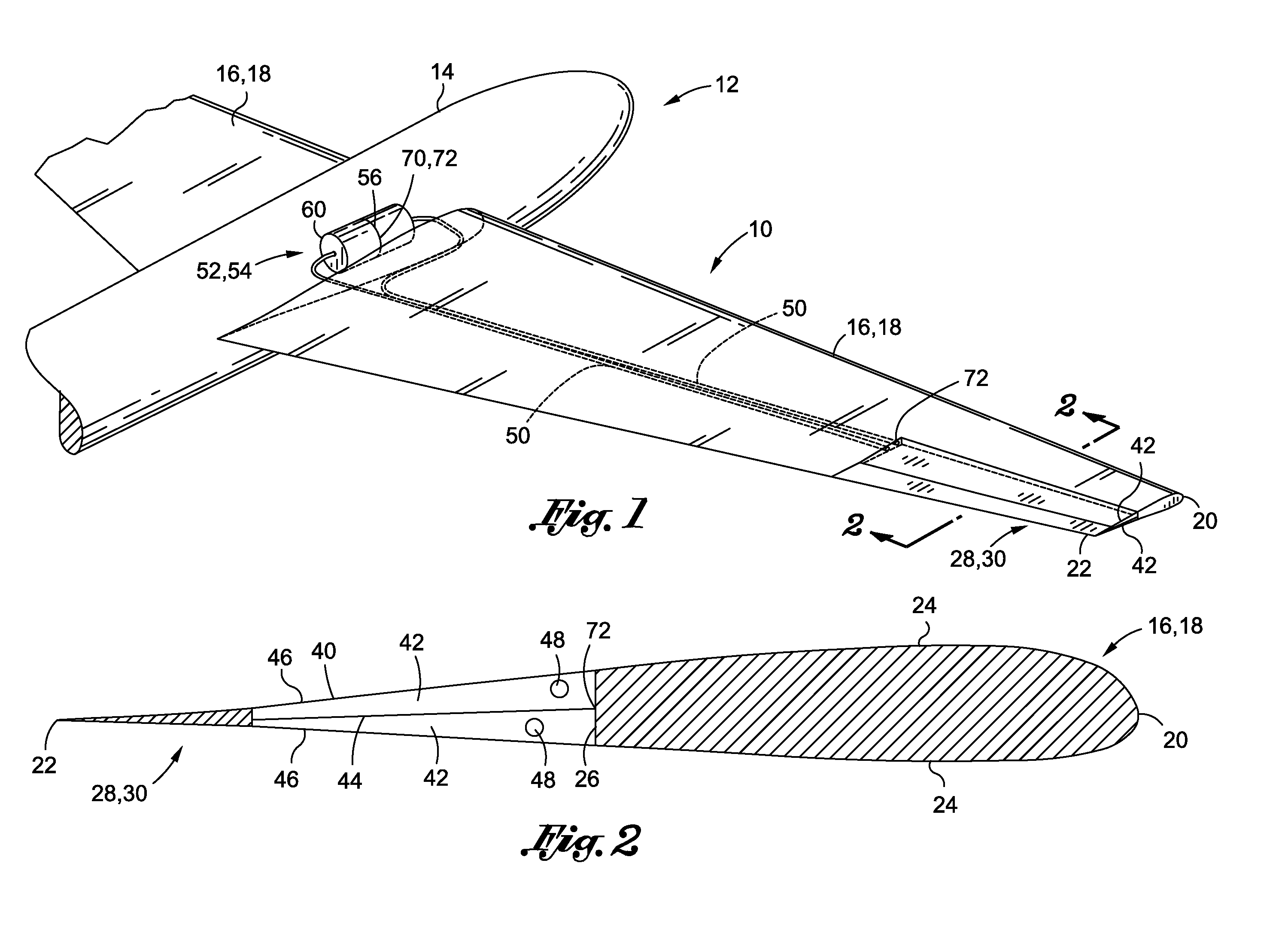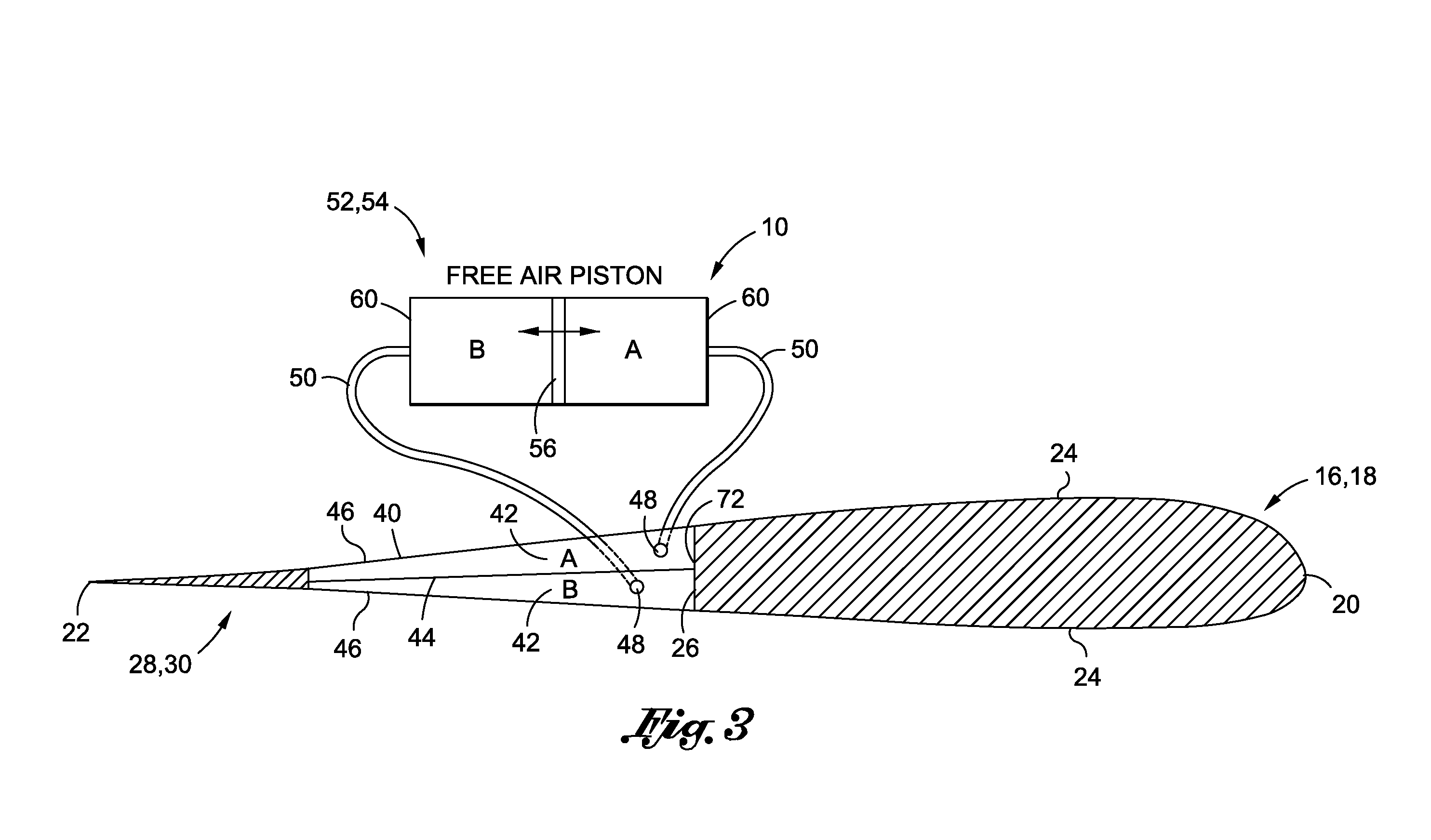Pneumatic control system for aerodynamic surfaces
a control system and aerodynamic technology, applied in the field of flight control systems, can solve the problems of affecting the overall utility of the aircraft, affecting the flight safety of the aircraft, so as to facilitate the upward and downward actuation of the control surface, facilitate the inflation and deflation of the cells, and minimize the effect of pillowing
- Summary
- Abstract
- Description
- Claims
- Application Information
AI Technical Summary
Benefits of technology
Problems solved by technology
Method used
Image
Examples
Embodiment Construction
[0039]Referring now to the drawings wherein the showings are for purposes of illustrating preferred and various embodiments of the invention only and not for purposes of limiting the same, FIG. 1 is an illustration of an aircraft 12 having one embodiment of a pneumatic control system 10 for a flight control surface 28 mounted on an airfoil 16 such as an aircraft wing 18. In FIG. 1, the control surface 28 is shown configured as an aileron 30 mounted adjacent to a trailing edge 22 of the wing 18. However the control surface 28 and airfoil 16 to which it is attached may be provided in a wide variety of alternative configurations.
[0040]For example, the control surface 28 may be configured as a flap 34 or elevon mounted on the trailing edge 22. In another embodiment, the control surface 28 may be configured to be mounted on a leading edge 20 of the wing 18 in a variety of configurations including, but not limited to, flaps, spoilers, drooping leading edge devices and various alternative ...
PUM
 Login to View More
Login to View More Abstract
Description
Claims
Application Information
 Login to View More
Login to View More - R&D
- Intellectual Property
- Life Sciences
- Materials
- Tech Scout
- Unparalleled Data Quality
- Higher Quality Content
- 60% Fewer Hallucinations
Browse by: Latest US Patents, China's latest patents, Technical Efficacy Thesaurus, Application Domain, Technology Topic, Popular Technical Reports.
© 2025 PatSnap. All rights reserved.Legal|Privacy policy|Modern Slavery Act Transparency Statement|Sitemap|About US| Contact US: help@patsnap.com



